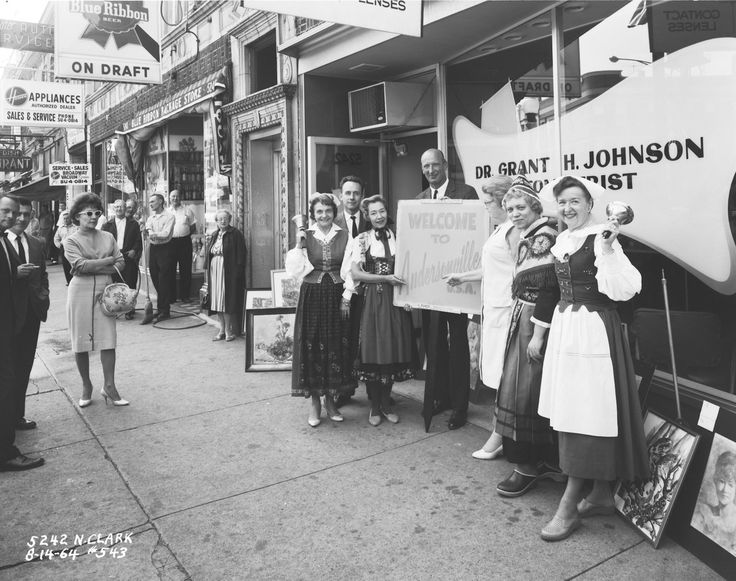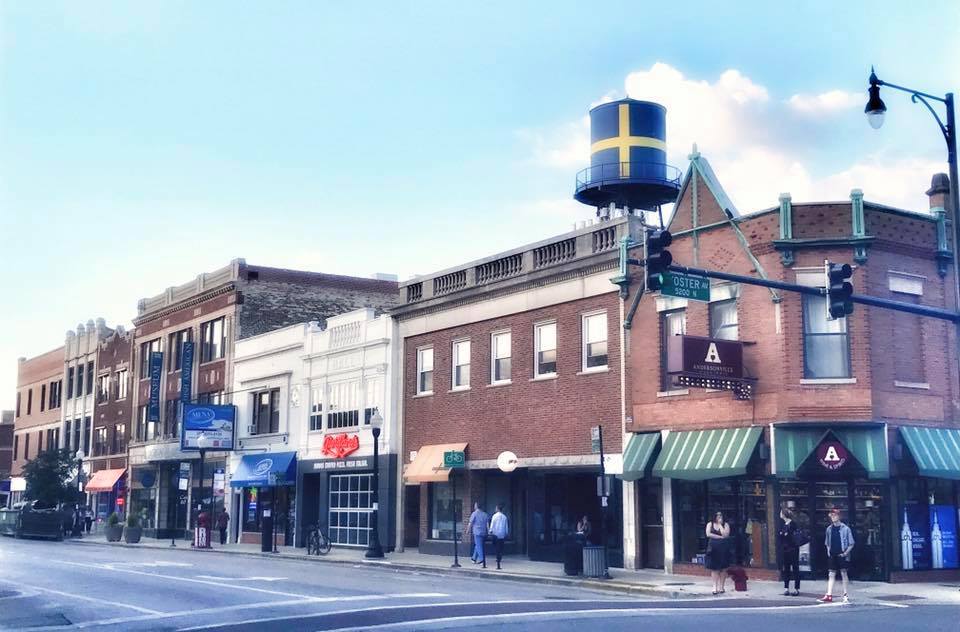
EARC - East Andersonville Residents' Council
powered by TidyHQHistory
History
Neighborhood History
Andersonville’s roots as a community extend well back into the 19th century, when immigrant Swedish farmers started moving north into what was then a distant suburb of Chicago. In the 1850’s the area, now known as East Andersonville, was a large cherry orchard, and families had only begun to move into the fringes of the area.
After the Great Chicago Fire of 1871, wooden homes were outlawed in Chicago. Swedish immigrants, who could not afford to build homes of stone or brick, began to move outside of the city’s northern limits. Swedish immigrants continued to arrive in Andersonville through the beginning of the 20th century, settling in the newly built homes surrounding Clark Street.
 Like most other European-American ethnic groups, Swedes began to move to the suburbs during the Depression and post-war periods, and the neighborhood began to decline. Concerned about the deteriorating commercial situation, the Uptown Clark Street Business Association renewed its commitment to its Swedish heritage by renaming itself the Andersonville Chamber of Commerce. On October 17, 1964, Andersonville was rededicated in a ceremony attended by Chicago Mayor Richard J. Daley and Illinois Governor Otto Kerner. The following summer, the annual Swedish tradition of celebrating the summer solstice blossomed into Midsommarfest, which has since grown into one of Chicago’s largest and most popular street festivals.
Like most other European-American ethnic groups, Swedes began to move to the suburbs during the Depression and post-war periods, and the neighborhood began to decline. Concerned about the deteriorating commercial situation, the Uptown Clark Street Business Association renewed its commitment to its Swedish heritage by renaming itself the Andersonville Chamber of Commerce. On October 17, 1964, Andersonville was rededicated in a ceremony attended by Chicago Mayor Richard J. Daley and Illinois Governor Otto Kerner. The following summer, the annual Swedish tradition of celebrating the summer solstice blossomed into Midsommarfest, which has since grown into one of Chicago’s largest and most popular street festivals.
In the late 1980s, Andersonville began a period of revival as new groups discovered its lovely housing stock, easy access to downtown Chicago and the lakefront, and unique commercial district. A large lesbian and gay population developed, spurred by the opening of such businesses as Women & Children First, a bookstore focusing on feminist authors and topics. New gift shops and ethnic eateries opened and gave Clark Street a new commercial vitality and diversity.
Today, Andersonville is comprised almost entirely of unique, locally owned, independent businesses. The vast majority of Andersonville merchants have ties in the community beyond the walls of their business. They may live in or near to the neighborhood, serve on community committees or boards, or provide funds, goods, and time to local charities. Andersonville has become a magnet for all kinds of families. There is a strong sense of unity in the neighborhood, a friendliness that has led more than one observer to note, “It’s sort of like Mayberry!”
Andersonville remains one of the most concentrated areas of Swedish heritage in the United States, but its residents and businesses represent a wide array of cultures. In March, 2010, the Andersonville business area was named a National Historic District because of its rich cultural and architectural history.
Andersonville’s commitment to all things local isn’t its only claim to fame. Like no other neighborhood in Chicago, Andersonville has demonstrated a deep commitment to the planet. Through its eco-Andersonville program, Andersonville instituted Chicago’s first neighborhood-wide residential composting program in 2013, which complements its commercial district recycling program. Andersonville was also the first community in the city to install a “People Spot,” created by turning parking spaces into green space for sitting and gathering. Andersonville now has two People Spots, plus on-street bike corrals encouraging sustainable transportation. In 2015 Andersonville has launched a year-long celebration of the 50th anniversary of Midsommarfest and of the neighborhoods being named “Andersonville.” (courtesy of Andersonville Chamber of Commerce)

